CyberKnife Surgery
One of the most modern kinds of radio-surgery, the CyberKnife, is a painless, non-invasive treatment for malignant and non-cancerous tumours. It makes treatment possible to difficult areas of the body, such as the spine and spinal cord. It is also used to treat cancers of the prostate, lung, brain, head and neck, liver, pancreas, and kidney. It can be utilised as an alternative to surgery or in patients with incurable problems. The CyberKnife System has been clinically proven to assist thousands of cancer patients for over two decades.
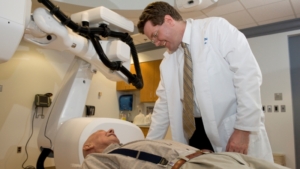
All you need to know about CyberKnife:
The surgery employs a robotic arm to administer high doses of precisely targeted radiation to the body’s cancers or lesions. The device employs cutting-edge technology to track tumours anywhere in the body. Its unique robotic design maintains radiation on target even when the tumour moves. This is the only technology that confirms the exact tumour position before administering the radiation beam. It then adjusts the robot to accurately target the tumour. This helps to guarantee that radiation is administered to the tumour rather than where it was minutes before.
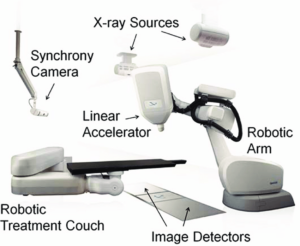
The CyberKnife System features a linear accelerator (linac) directly mounted on a robot to deliver the high-energy photons. The robot moves and bends around the patient, to deliver radiation doses. This robotic delivery and real-time image guidance have set the standard for delivery precision and enable stereotactic radio- surgery (SRS) and stereotactic body radiation therapy (SBRT) treatments for the full range of tumour types.
Is the procedure painful?
The procedure is painless and non-invasive.
This just adds to the list of advantages that CyberKnife has to offer. In addition, because (SRS) and (SBRT) use high doses of radiation to ablate all tissue within the irradiated volume, precise tumour tracking is required. The CyberKnife system is the only one that can deliver SRS and SBRT with the confidence that doses are delivered with accuracy.
Compared to other radio-surgical treatments, the CyberKnife offers several advantages to
patients, including rapid relief from pain and other symptoms. Treatments usually last
between 30 to 90 minutes. The CyberKnife allows patients to lie comfortably on the
procedure table without aenesthesia while the robotic arm moves, without touching them, to
treat all areas of the tumour.
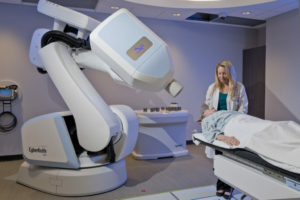
Can I eat or drink before my CyberKnife treatment?
Yes, it will not affect your treatment at all.
Given the treatment’s flexible & efficient dynamics and low risk of complications and
damage to healthy tissue, recovery is often immediate.
The effects of radio-surgery occur gradually and over a period of time. The timeframe can
range from days, months or even years depending on the medical condition targeted. Some
tumours change slower than others and eventually disappear. Others simply stop growing
and present no further cell growth or activity.
Data from the multi centre studies indicated a 97% to 100% survival rate for low-risk
patients and an 88% to 97% survival rate for intermediate-risk patients.
After treatments patients typically are asked to get periodic images (CT Scan or MRI) of their
tumour(s) so that their physician can monitor the effectiveness of the radiation.
To get a CyberKnife treatment is no doubt a strain on your wallet compared to other
radiation treatments. However, the emphasis of a CyberKnife is the number of benefits it
offers that most radiation treatments lack.
Below is the approximate cost of undergoing a CyberKnife in over 6 different countries:
India: $6,800 – $9,000
US: $100,000
UK: €10,000 – €30,000
Germany: $9268 – $17378
Turkey: $7500 – $9000
Israel: $18000 onwards
The frequency of treatments depends on where the tumour is located and what type of
tumour is being treated. Most cases can receive multi-treatments or be retreated with the
CyberKnife.
Complications may occur but the frequency and severity are typically mild & tend to stem
from the region that is receiving treatment.
After treatment sometimes patients experience headaches or feel nauseated or tired. These
symptoms are typically temporary. Uncommon complications may include skin reddening or
vomiting. Delayed symptoms may include swelling, inflammation, or scarring in the
treatment site or adjacent normal tissue regions. Specific side effects vary with the site that
is being treated. We urge you to speak with your physician prior to proceeding with
treatment.

What should I keep in mind before opting for a CyberKnife surgery?
The CyberKnife is a unique modality and as such only a CyberKnife trained physician can
best determine if it is appropriate treatment for a particular condition. An experienced
CyberKnife physician can offer the best advice and discuss other treatment options with you
and your family. To see if you are a candidate for the CyberKnife treatment, please talk with your doctor. You may be referred to a CyberKnife-trained physician who can evaluate your condition, as well as discuss other treatment options with you and your family.
Citations & Sources:
(CyberKnife, n.d.) (Department of Radiation Oncology, n.d.) (Mass Device, n.d.) (UNC School
of Medicine, n.d.)

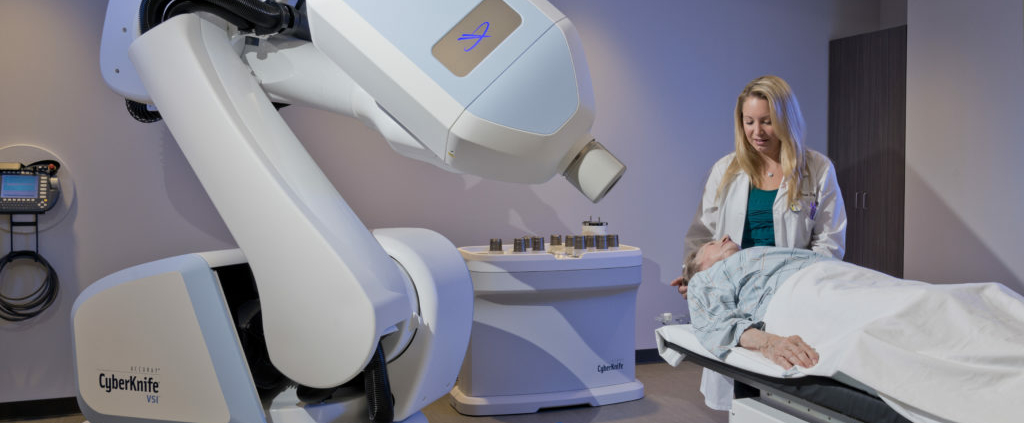





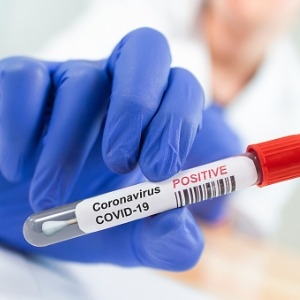








Leave a Reply
Want to join the discussion?Feel free to contribute!